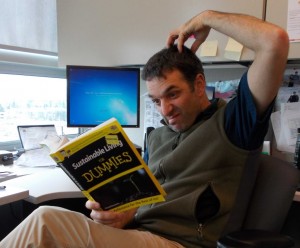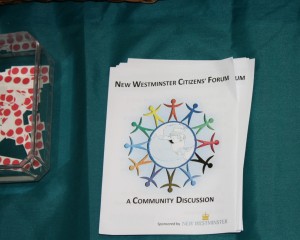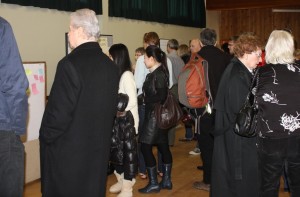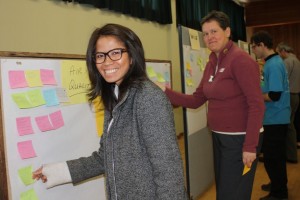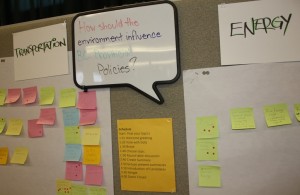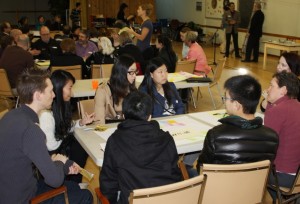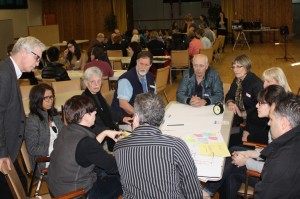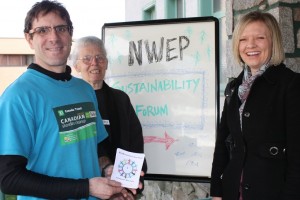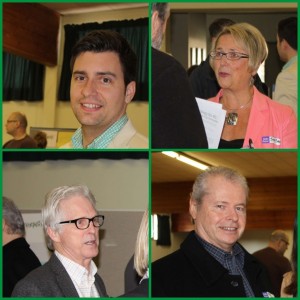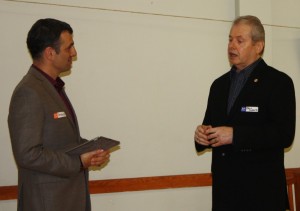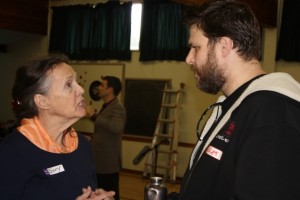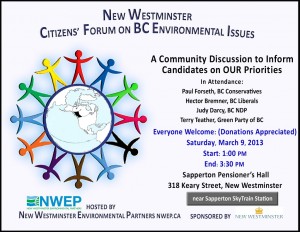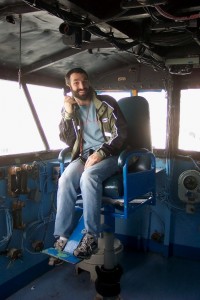With the Provincial election just around the corner… Oh, no wait, it is still months away despite an unofficial and unaccounted campaign that has been running for almost a year… the local candidates are lining up as expected. The four parties we can all name have New Westminster candidates that fit their party’s brands very well (depending on whether you agree with my rantings below, this is not necessarily a compliment), and then there’s the spectre of an independent candidate running.
I have said it before, and I’ll say it again: I am a local candidate voter. I don’t belong to any Party. I have voted for candidates from pretty much every party, from the Reform Party of Canada to the Marijuana Party, but I don’t remember ever voting specifically for a Party in an election.
As a natural critic (some would say whiner), my political opinions have tended to veer to the political left when there is a more conservative government in office, and towards the political right when there are more progressive governments. Taking on-line opinion surveys meant to test “what party fits you best” tends to stick me right in he middle of the Green Party platform, but that is mostly because I think that shitting in our own nest is probably a bad idea.
When it comes to candidates, however, I want to meet the candidate. Call me old-fashioned, but I think the Westminster system of representative democracy is built on the idea that we, the constituents, select someone to represent our community’s interests at the Legislature, not a person to represent a Party in our community.
This is, of course, one of the bigger problems with the current Conservative Party of Canada, who have ramped up the Party-uber-alles philosophy of governance that so irritated Stephen Harper when the Liberals did it that he helped create a new Reform Party specifically to fight it. At this point, the most frustrating part is that Harper is so damn effective at being what he used to hate. Not a single Conservative MP can find even the slightest flaw in any piece of legislation the Party has created. So you end up with situations like local Conservative MPs explaining that closing a local Coast Guard base will make our coast safer instead of challenging their own party to make better choices for their constituents.
This situation has different effects during the election cycle. Last Federal Election, it was the curious case of the missing candidates. Why would a candidate in a riding where one Party has a significant majority bother to show up for all-candidates meetings? To hear the concerns of constituents? (pause for laughter). When the MPs role is to represent the Party to the riding, and the party platitudes platform is on the TeeVee, why bother showing up and risking saying something inappropriate? Why bother meeting your constituents? You might disappoint them!
I suggest the problem with Party Politics is the Party itself, and the power vested in the Party. The fact our current Federal Government refer to themselves (and force the Civil Service to refer to them) as “The Harper Government” more than the hopelessly old-school “Government of Canada”, shows that the Parties understand their Power, and are willing to put themselves, their name and brand, above that of the Country they are trusted to run.
So if the problem is the power of the Party, then maybe we should consider what the Party system gives us, and how we could do without it. Parties make voting “easier” for those not interested in learning who they are voting for. This is because they create a ready-built campaign machinery to keep the entrenched in power. Parties provide a central funding pool with which to purchase advertising to smear their opposition get their message out. They also make the first-past-the-post system so effective at giving a group with 37% of the popular vote an absolute majority to do what they like in Ottawa for 5 years.
Worse, the system results in too many people holding their noses while they vote for a person or a party they don’t necessarily like, because it is better than the alternative. This, more than anything else, is the reason so few people bother to vote anymore: there is increasingly little to vote for. In our hyper-cynical age, more people will show up to vote against something than will to vote for something. Parties leverage this cynicism and stoke it through negative advertising. (This is why I predict, even without the NDP investing in negative advertising, Premier McSparkles is her own negative ad, and there will be an increased turnout this Provincial election over the previous one).
So what is the alternative? Independents?
I would love to see a system where we only have independents – where the entire Party system and its funding mechanisms are abolished. Follow me for a bit here.
At election, we send 308 independent local representatives to Ottawa to sit in the House of Commons. Yes, many candidates will align on topics and form defacto parties around certain issues, but without the whip system and without the centralized funding mechanism, there will be no reason for an MP to not vote freely on a different issue. In the inevitable horse trading of votes in the House, the representative will only have to answer to their constituents. Not to a party, not to a leader, and certainly not to a mid-level political hack called a “whip”. The only thing that will influence their re-election chances is how well their community feels they were represented.
Many people smarter than me have mentioned how effective Elizabeth May is as an MP. There are several reasons for this: she is a student Parliamentary Democracy; she is damn smart; she works her ass off; and she is a true believer in Democracy as a Principle, and as a way to solve problems. However, much of her power is also a result of her unique position of being effectvely an independent who can still use the mechanisms built up to support the Party System.
So how to we break down the Party systems that separate us from representative democracy? We make Parties and their economic models illegal. At election time, everyone runs as an Independent, with only local funding and organization. When 308 independents are sent to Ottawa, their first job would be to select a Prime Minister, a deputy PM, and a Speaker. Those three then create a caucus, drawn from the MPs in the House and (this is not as shocking as you might think) unelected experts in various fields. Only elected MPs get a vote in the house, but every vote is a free vote, and the majority of the house can lose confidence in the Government Caucus only with a majority vote on a confidence motion.
Oh, there are problems with this idea. Some suggest lobbying and influence peddling would likely be more attractive, so strict controls would need to be introduced. However, with the current system in Ottawa, one needs only to lobby the PMO, and they will bring along 160 votes. A party-less system would make lobbying individual members a more daunting task, and can hardly make the lobbying situation worse than it is is today.
We would also have to do something about the current Parliamentary Retirement Castle and Party Fundraising Department we call the Senate. but that’s another blog post.
So I have a soft spot for independents. I am an engaged local voter, and like the idea that the person we send to Ottawa or Victoria represents our community there. I even agree with the premise that more Independents make for more effective governance.
Would I vote for an Independent for New Westminster in this upcoming Provincial election? Yes. Keeping in mind that that a candidate’s lack of Party affiliation is no more proof of their capability than their affiliation is. If that Independent was to convince me that they could effectively represent New Westminster, and would work their ass off to assure we are represented, them I could vote for them. But it is a tough job to be that effective in our current system – I’m not sure there are too many Elisabeth Mays to go around.
At this point, I am still a local candidate voter, regardless of whether they represent a Party or are independent. Either way, it should be a good election, as we have strongly motivated candidates.
Game on!
